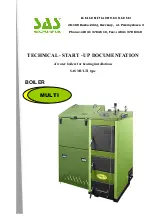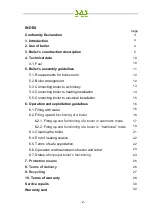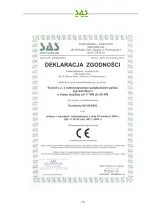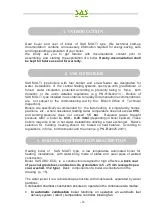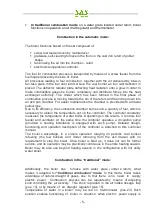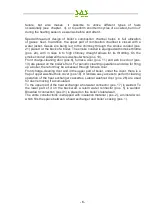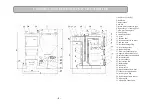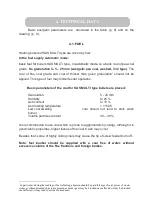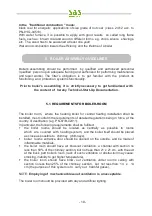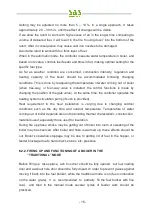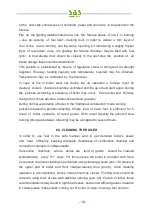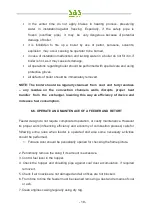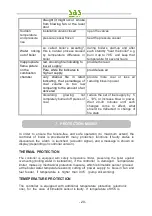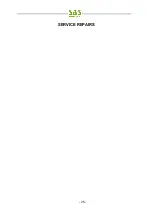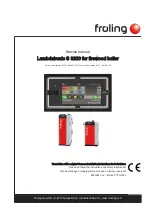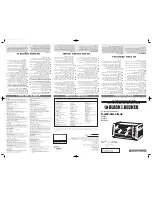
- 14 -
and ventilator may be switched on independently
) for such a period, which is
sufficient for feeder to transport a part of fuel stored in the hopper into the iron cast
retort (3 – 6 min.).
On the coal layer, put using the opening of the door (furnace door) pieces of crimpled
paper, and on the top of it put pieces of wood. Fire up a paper, close the door and
switch on ventilator. Once the batch is glowing uniformly, the controller to be switched
into AUTOMATIC MODE. When is this mode, set the temperature value on the
controller (temperature of water in boiler), define working time of feeder and
determine the delay between the feeder’s successive connections. The whole
procedure should be in line with the controller manuals (User Parameters
Configurations). The volume of air delivered with a fan should be according to coal
combustion intensity. During firing up phase, the boiler should be controlled until
feeding water reaches 45
o
C. This procedure is important, as varying fuel quality may
cause the boiler to burn out.
If the fire is out during up phase, the furnace should be cleaned and boiler’s channels
ventilated, and the whole starting procedure must be repeated.
Once boiler is put into operations, basically is works unattended and combustion
process is continuous. Further service is limited to refueling the fuel hopper and
emptying the ash box chamber.
During the loading of fuel refueling, attention should be paid if lumps of coal,
pieces of wood, stones or other unwanted objects are present, as feeder gear
may be blocked once affected (it may lead to cut the couple wedge of the motor
gear)!
Controller’s set points should be adjusted according to current outdoor temperatures
and quality of the fuel. When adjusting the set points, such considerations should be
taken into account:
combustion is not stopped due to too low volume of delivered fuel and too
long brakes between successive feedings,
feeder is not discarding glowing pieces of coal.
Red, smoking fire indicates that air admission is too low. Pale, white fire, indicates
that air admission is too high. Proper fire is when clean, yellow fire is observed.

